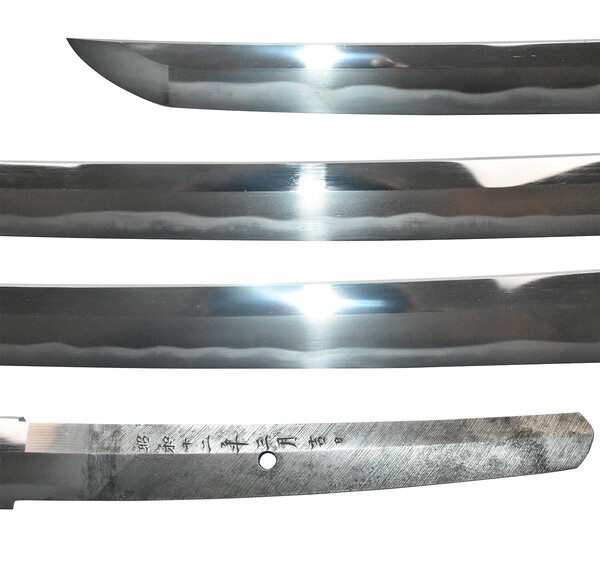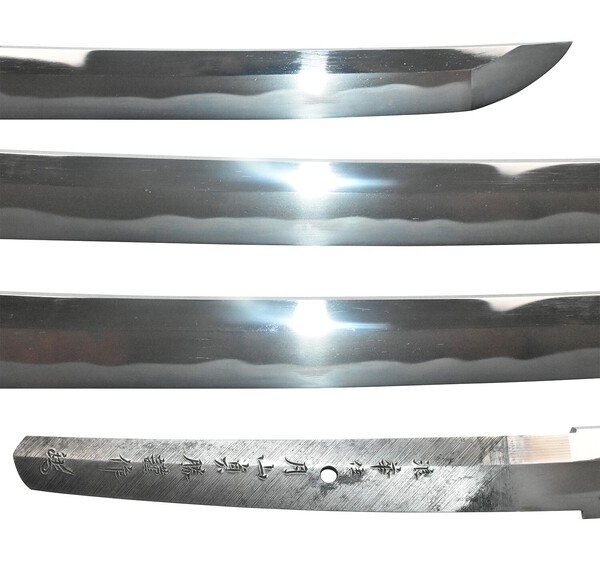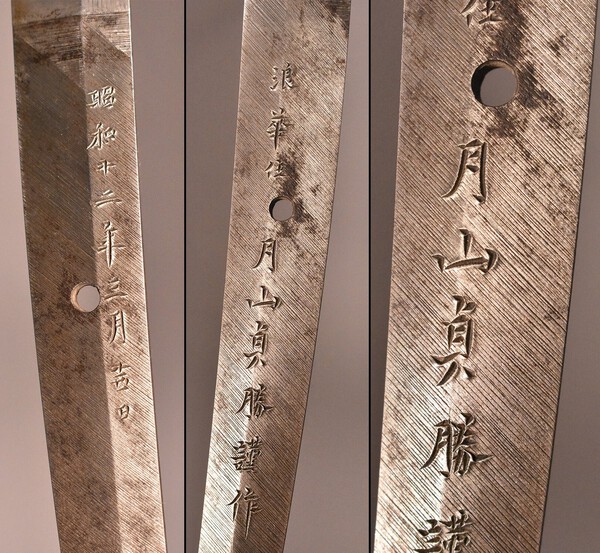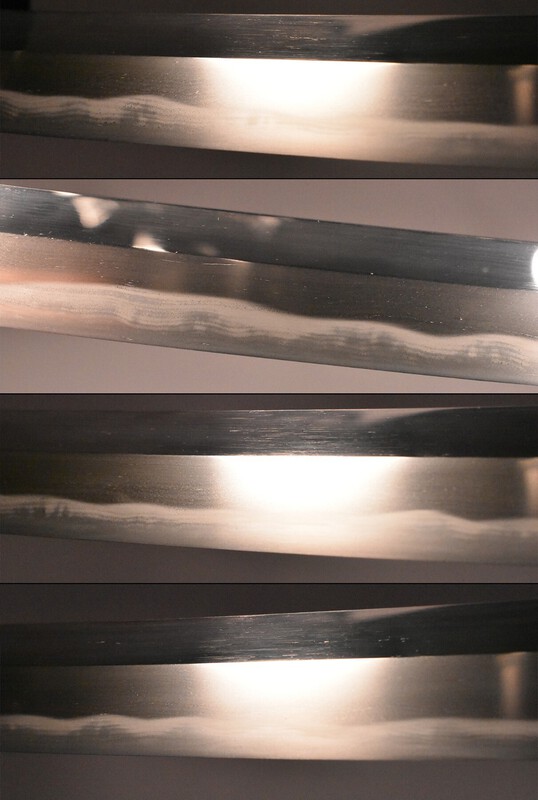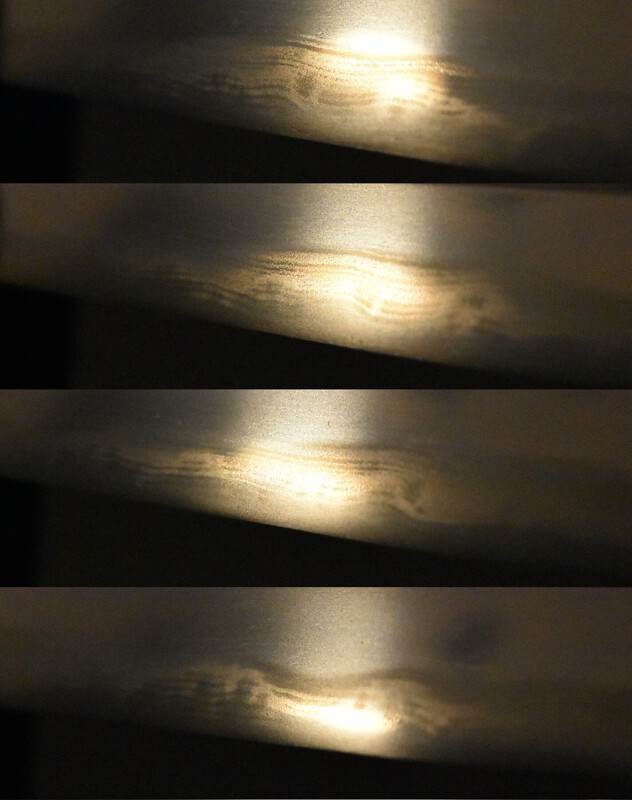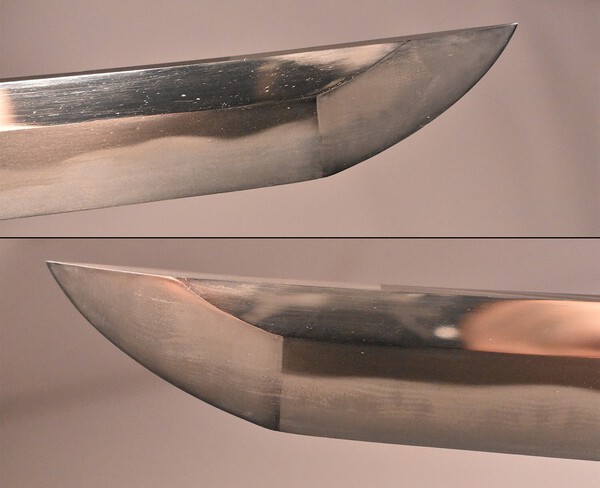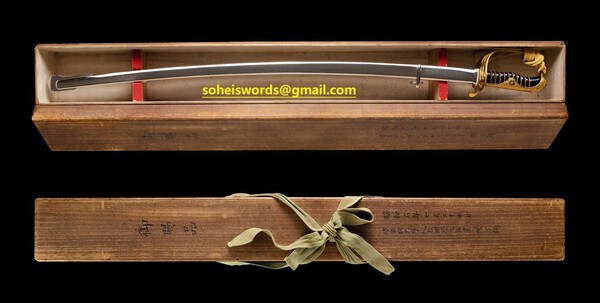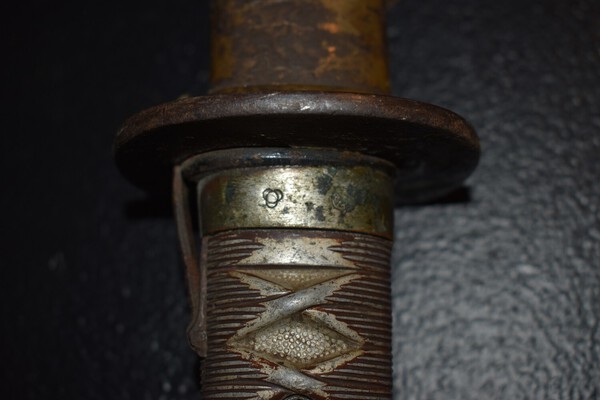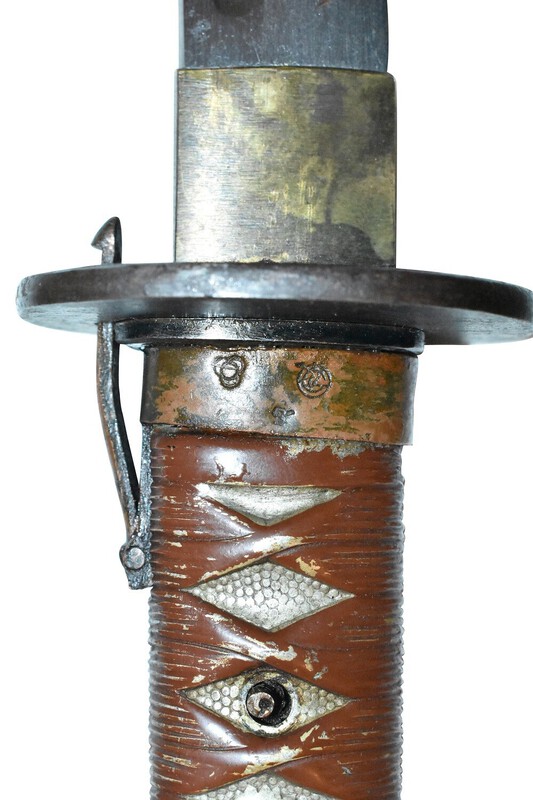
mdiddy
Dealers-
Posts
638 -
Joined
-
Last visited
-
Days Won
1
Content Type
Profiles
Forums
Events
Store
Downloads
Gallery
Everything posted by mdiddy
-
Yes, I can bring it, would you like an in hand inspection?
-
Yes, I wonder if that may have been the case. Tenshozan increasingly shows up as an adept player in the sword industry from the 40's onward. Tangentially related, I would love to know the relationship between Kawamura Eijiro Kanenaga and the Tenshozan manager Shintaro Yao. I can't imagine Kanenaga was just an employee. He passed in '43, I wonder if had some kind of stake in the operation given his connection to Seki, work with experimental steel, etc. That's an interesting observation. I did a little digging in my archives and found some intriguing late war kai gunto examples that may enrichen the discussion on the 'souvenir' swords a little. I'll post them soon.
-
I have one to add. It is for sale but still worth a share I think. Lots of blades by Gassan Sadakatsu have already been presented and I'll add one more, this one in Soshu-den style. The workmanship is reminiscent of a Go Yoshihiro I had the opportunity to study in hand.
-
Yes, I do. A bit new-ish and a bit out of sorts. Love the saya though.
-
Thanks for sharing. I've never dealt with IMA. I know there are a lot of solid dealers with years on years of experience that can be contacted through the message board. I highly recommend connecting with one. They can be very helpful.
-
There are examples during the war where army and navy parts were mixed. Even examples later in the war. The snipped nakago is a sign of a weak production process. Historically, and even into the later war years, the Japanese took great care in finishing the nakago. The snipped nakago suggests to me possible post-war manufacture, but that leaves very many of the 'souvenir' swords with perfectly fine nakago showing the care normally expected of Japanese swords: shaped nakago-jiri, yasurime, mekugi-ana placement, etc. It's those nicer ones that I surmise may have been used in versions of the 'souvenir' sword that existed before the end of the war, even if they did not see combat nor were even issued. I did find an interesting example. Maybe this discussion would be better had on the formal 'NLF' thread?
-
It's an interesting supposition and possible, but a stretch in my opinion because the police sword has a number of differences from the 'souvenir' sword that are not easily justified by the time frame. Specifically: 1. The police sword has a brass Type 98 tsuba; given the tie to military use, while there may have been a surplus, it seems an odd part to have and be using at production scale in 1948. 2. The police sword has same rayskin under the tsuka-ito; that differs from the 'souvenir' sword and would require a different source for supply. It seems odd they would purposely choose that material in 1948 given they already had another material in use for production (i.e. the black canvas) and the complexities of having to stand up a new / different supply source. 3. The main difference are the blades themselves; the 'souvenir' swords all have naval-style stainless blades with etched or no hamon, but the police swords have at least Seki-style showato. The one I have now is frankly borderline gendaito - nice signature, nicely filed nakago with hints of the silvery finish associated with gendaito, the hamon has a nioi guchi with some hataraki. The other police swords I had were signed, either with a Seki-style oil-quenched gunome midare or a kind of suguha. This kind of workmanship would really be a stretch if these swords were made post-war, imo. I can't imagine they were surplus stock either because they were all nice enough to have been put into a late war gunto mount sometime between 1943-1945. What do you think? Happy to keep exploring the topic.
-
When did you buy it, where did you buy it, and from whom did you buy it? What did the screw and nut on both sides of the tsuka look like? How about both sides of the screw for the sarute? Was the tsuka loose, even just a bit?
-
I wish these boxes were old enough for radio-carbon dating. I've had them before and they always seemed janky. The nails were either too new or too dangerous (i.e. tetanus shot dangerous). I like the WW2-era Japanese style box...
-
At worst it is a total post-war reproduction. At best it is a post-war reproduction that someone tarted up with a few real parts (i.e. the fuchi, and maybe only the fuchi). The nakago is clearly not that of a Japanese made sword. Besides the crude manufacturing and lack of care taken in finishing, the placement of the mekugi-ana is way far off where it would need to be to make it a functional weapon.
-
It's possible it is due to the width of the tsuba. If that sword was blade, saya, thick seppa, and tsuba, but missing the tsuka and lower seppas, then they had to compensate by adding mismatched seppa to get everything to line up with the replaced tsuka.
-
@vajo My conclusion is that maybe it was a blade and a saya that was matched up with a tsuba, tsuka, etc. A habaki was added and that required a little work around the koi guchi and to get the screw to match in the tsuka a little adjustment had to be made with seppas. I could be wrong and I've seen stranger.
-
@vajo The ana in the koiguchi is also a little odd with the rough edges. I compared it to a few of the ones I've had.
-
@vajo The seppas and habaki are still maybe a concern. I looked back at a couple that I currently have and several I have had in the recent past (see attached pics). I can't find an example with a thicker seppa on top of the tsuba matched with thinner seppa between the tsuba and fuchi. From my data, looks like if a thick seppa was used above the tsuba, it was also used below the tsuba. Also that shiny gold seppa is a little out of sorts.
-
@vajo Thanks for sharing the extra pics. The blade looks ok to my eye. The kissaki looks within reason, the ko-shinogi is formed ok, and the bo-hi terminates correctly. The yokote can be seen a little.
-
Is it possible some of the souvenir swords already existed? Could some have already been put together for some other use late in the war before re-purposing to fulfill orders from GHQ? Certainly would have made production easier if they already had a design template, stock inventory, supply of materials, etc.
-
Can you post a picture of the kissaki showing the terminus of the bo-hi? Also maybe a few shots of the blade? The fakes have never solved for getting the bo-hi right.
-
Sounds more like a post-war job. Poor fitting tsuka is usually a give-away.
-
The examples of the tachi style police sword that I have encountered have all appeared to be issued late in the war. Specifically, the furniture - fuchi, kabutogane, etc were all very crude, and the blades were low-end showato, occasionally signed. This contrasts with earlier police-style swords that featured higher quality workmanship (see attached photos). I don't think the 'souvenir' sword was modeled after a civilian sword, I think they just had similar saya to that of the police sword because they probably came from the same supplier late in the war.
-
Good catch! That's the one from the Plimpton collection, the same in the book excerpt I posted. It's a stellar example of this kind of variant.
-
Someone might come along with the insight you are looking for ( @Kiipu maybe?) , but my guess is your question will have more luck connecting to an answer in a forum like Gunboards or similar.
-
If you can find an economic option, I bet the blade could be restored. I have had them like that and always wondered what kind of magic buffing wheel it took because showato steel is really hard, ask a polisher who has attempted a restoration on one. But, that kind of buffing can be replaced by a fresh polish, I've seen it firsthand.
-
I have had several over the years. I still have at least one. The nicest though was the one we had from Plimpton's collection. Everything on it was mint. Also, on the ones I have had - particularly Plimpton's - the saya was the same or very similar to that on the oft-discussed 'souvenir' sword. Different furniture of course, but the same black finish.
-
Yes! A must-do for collector's that participate in their auctions. Their customer service is top notch. It is a great experience.
-
Late war type 3 in my local antique store, need advice
mdiddy replied to Bridges's topic in Military Swords of Japan
Yeah, I can think of about 1000 reasons why. Here's another one I dug up. Similar, but a little different flavor, yet with another crude nakago.

